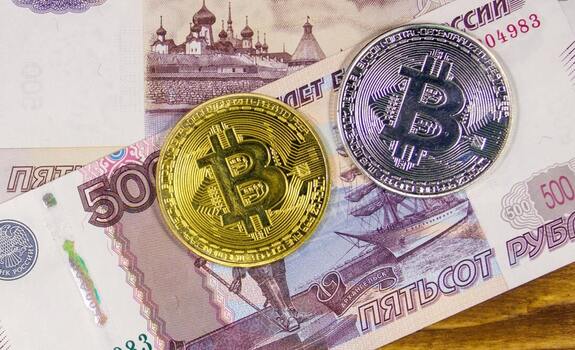Digital Ruble vs Cash: Advantages and Disadvantages of the New Currency
In 2025, Russia launched the digital ruble (CBDC) — a state electronic currency issued by the Central Bank of Russia. It is designed to complement cash rubles and non-cash bank transfers, merging the best of both worlds. Let us explore how the digital ruble differs from traditional banknotes and coins, what its advantages and limitations are, and how it will impact the economy and users.
Financial Characteristics and Transaction Costs
P2P Transfer Fees
There are no fees for users making transfers of up to 100,000 RUB through the official CBDC application. Even with frequent use of the mobile application, the total savings on fees per year could reach several thousand rubles for active users.
Point of Sale Transactions and Online Checkout
Paying for goods and services with the digital ruble through QR codes and NFC is almost always free for consumers. The fee to banks for acquiring CBDC transactions is a fixed “clearing fee” of 0.01 RUB, whereas card acquiring costs retailers 1–1.5% of the bill. Shops report a 15% reduction in costs and faster service.
Cost of Offline Payments
Transfers of up to 5,000 RUB in offline mode are possible without charge. At the same time, withdrawing cash through mobile banking while roaming costs 2% of the amount, making CBDC more attractive for travel and business trips.
Technology and Security
Distributed Ledger Technology (DLT)
The CBDC network is built on a private distributed ledger: nodes of the Central Bank of Russia and authorised banks store copies of all transactions, thereby eliminating a single point of failure and protecting against counterfeiting. The automatic synchronisation recovery feature is also included as a standard part of the node equipment.
Smart Contracts "CBDC-Script"
The new programming language supports conditional payments, subscriptions, and instant microloans. In a pilot project, a major bank used "CBDC-Script" to create a service for automatic utility payment calculations considering benefits and subsidies.
Encryption and Data Protection
Transactions and wallet data are protected by GOST 34.12 and international TLS 1.3 standards. Private keys are stored in secure enclaves of mobile devices or in hardware security modules (HSM) of banks, preventing theft and unauthorised access even if the phone is lost.
Privacy and Anonymity
Anonymous Micropayments
Transfers of up to 5,000 RUB can be made without full identification, similar to small cash transactions. However, the total amount of all anonymous transfers for the day must not exceed 100,000 RUB — this control helps prevent abuses.
KYC Levels
Transactions exceeding 100,000 RUB require KYC level 2 with complete passport details, which reduces the risk of money laundering without infringing on the privacy of small transactions and expedites onboarding for most users.
Hybrid Data Control
For larger sums, a “transparent mode” is used where participants agree in advance to disclose their data, simplifying settlements in B2B and public services. This accelerates payment processing and reduces the risk of errors.
Accessibility and Infrastructure
Wallet Applications
Official mobile and web applications for individuals and a banking API for business developers. The interfaces support iOS, Android, and PWA, including offline-first functionality for weak networks.
Offline Mode
For regions with unstable internet, one-time keys and NFC tags are provided. The user generates a QR code offline and sends it to the recipient, who only needs to scan it while online.
ATMs and Acceptance Points
Cash ATMs have been upgraded to accept and dispense CBDC codes (QR checks), automatically deducting funds from wallets. The process takes no more than 30 seconds and does not require a cashier.
Socioeconomic Effects
Incentive for Electronic Business
Reduced transaction costs and instant settlements strengthen small and medium businesses, encouraging them to transition online. Experts estimate that the introduction of CBDC will increase the revenue of small businesses by 10% by expanding payment channels.
Reduction of the Shadow Sector
Transparent digital transactions complicate informal cash settlements: it is projected that tax revenues will grow by 5-8% in the first three years following the launch of CBDC.
Financial Inclusion
Simplified access to the digital ruble and offline modules help connect pensioners and residents of remote areas to the financial system: in pilot projects, participation in CBDC increased financial activity in regions by 15%.
Regulatory and Fiscal Impact
Monetary Control
The Central Bank of Russia receives real-time data on the money supply, enabling more precise regulation of interest rates and the application of targeted incentive payments directly to citizens' wallets.
Transparency of Transactions
The real-time reporting system reduces bureaucracy, facilitating control and auditing. The reduction in paper document flow has expedited transaction verification by 40%.
Targeted Payments
CBDC wallets can be used to make payments to youth, entrepreneurs, or socially vulnerable groups without intermediaries. This will reduce the time it takes to transfer funds to just a few minutes.
User Experience and Trust
Intuitive Interface
Mobile applications provide a “one-click” option for P2P transfers and in-store payments. The number of clicks required to complete a transaction has been halved compared to bank transfers.
Training and Support
Chatbots, video guides, and hotlines assist users in mastering the digital ruble, reducing the load on call centres by 25%. Virtual simulators allow users to safely practice transfer scenarios.
Personalisation
Transaction analysis enables banks to offer personalised cashback programmes, discounts, and financial advice, enhancing customer loyalty and increasing average transaction value.
Inclusivity
Support for voice assistants, large fonts, and multilingual interfaces makes applications accessible to all population groups, including people with disabilities.
Limitations and Risks
Technical Failures
Node failures in the DLT network may slow down settlements. Banks and the Central Bank are preparing backup channels and failover procedures to ensure continuity. Regular stress testing of the network will help minimise downtime risks.
Cyber Threats
Centralised issuance attracts malicious actors. Banks conduct regular penetration tests, security audits, and implement secure enclaves for key storage.
Regulatory Changes
Frequent updates to regulations create burdens on the compliance departments of banks, potentially slowing the implementation of new CBDC features. A solution could be centralised platforms for exchanging regulatory news.
Psychological Barriers
The older generation and conservative companies are slowly transitioning to CBDC due to a lack of trust in new technologies. Banks are launching campaigns to “exchange banknotes for QR” with bonuses to stimulate early adoption.
Additional Aspects and Trends
Alternative Cash Usage Scenarios
Cash allows full anonymity and is indispensable during emergencies without network access. Hybrid cards with NFC for CBDC combine the benefits of both tools, particularly in rural areas.
Environmental Impact
Reducing the production of paper banknotes and minting of coins could decrease the carbon footprint by 30% by 2030. The Central Bank of Russia is already planning to integrate digital currencies into the ESG reports of financial organisations.
Psychological Habits
Cash is a tangible tool that instils trust among the older generation. Campaigns to “exchange banknotes for QR” and incentives such as cashback help alleviate the fears surrounding new technologies.
International Experience
China’s e-CNY and Sweden’s e-Krona have shown a 20-25% increase in cashless payments during the first few years of their pilots. Russia is adapting these practices, including offline functionality and low fees for small businesses.
Future Opportunities
CBDC opens the door for asset tokenisation: banks will be able to issue securities and real estate directly in digital rubles on a DLT platform, significantly reducing placement time from weeks to hours.
Conclusion
The digital ruble combines the speed and low cost of cashless transactions with the control and reliability of the Central Bank. It reduces costs, increases transparency, and fosters the development of the electronic economy while retaining cash as a backup tool. The success of the CBDC depends on the quality of user experience, security levels, and the ability of banks and regulators to flexibly adapt the technology to user needs.




